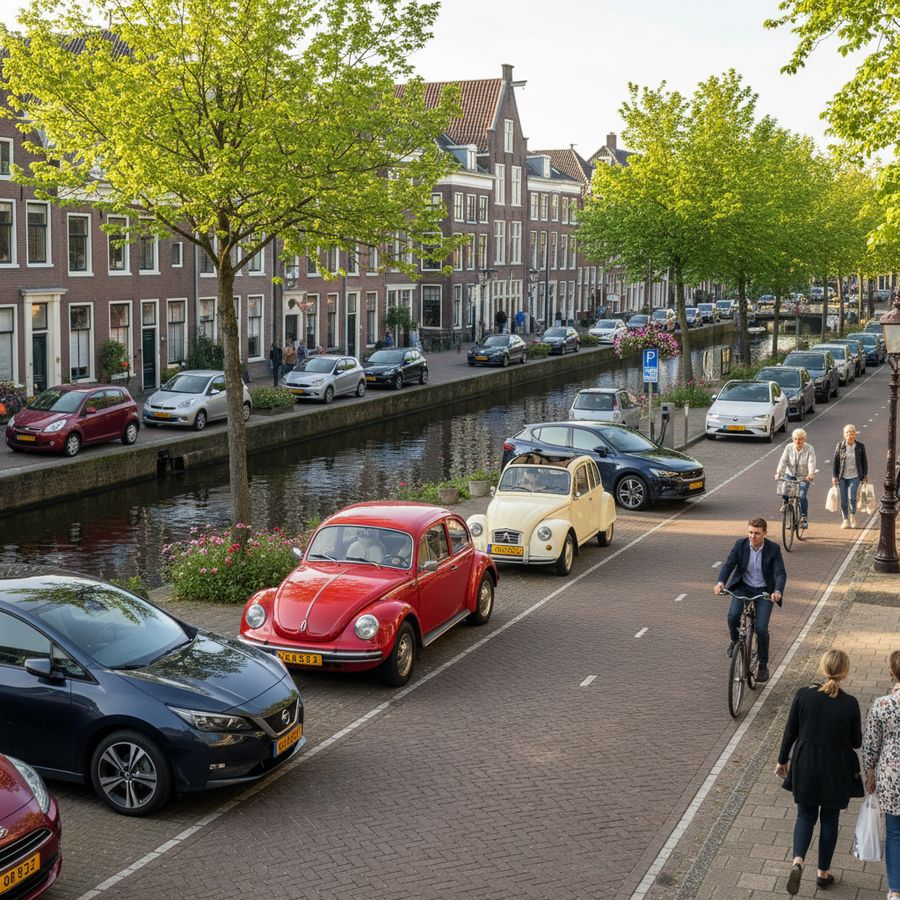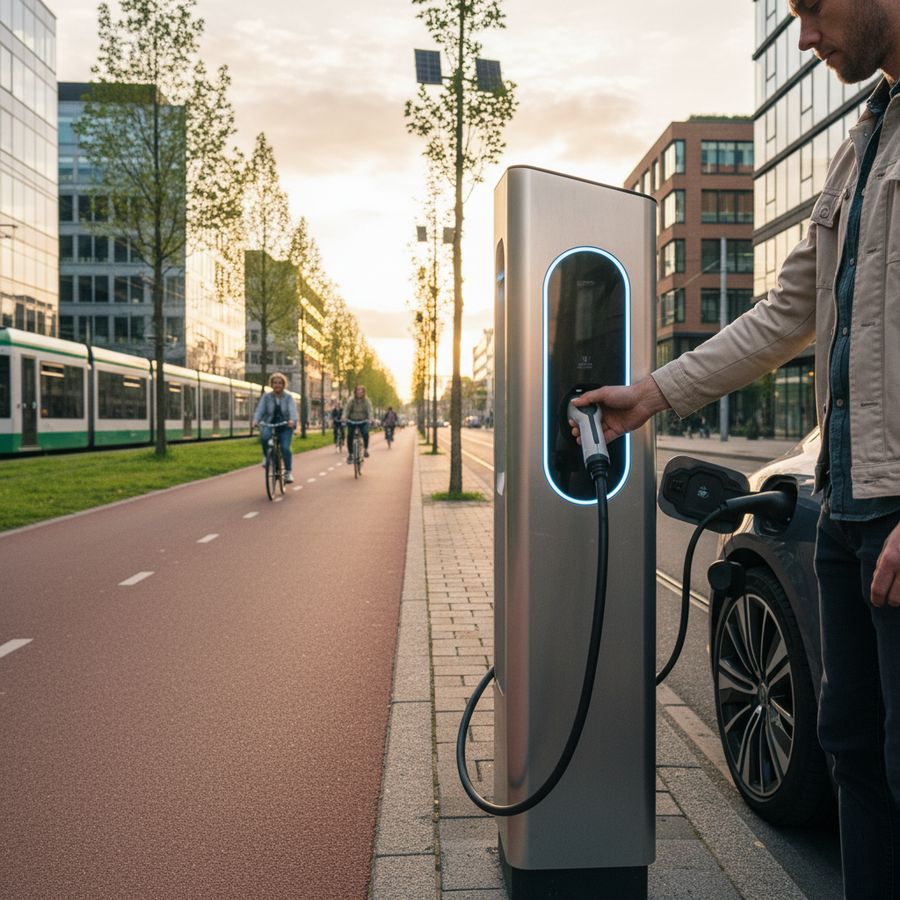How Vehicle Type Influences Your Car Insurance in the Netherlands
Overview
Understanding how vehicle type insurance impacts your car insurance in the Netherlands is essential for every car owner. In the Dutch market, insurance providers carefully assess the kind of vehicle you own to determine the level of risk and, consequently, the insurance premiums you will pay. This means that whether you drive a compact city car, a classic vintage vehicle, or an electric car, your Dutch car insurance costs and coverage options will vary.
The Netherlands is known for its diverse range of vehicles on the road, from practical hatchbacks to innovative electric models. Insurance companies factor in various elements tied to vehicle type — including the car’s value, repair cost, likelihood of theft, and environmental impact — when crafting policies. This tailoring ensures that premiums are fair yet reflective of the risk posed by different vehicles.
Vehicle type insurance is thus not just a bureaucratic formality but a critical aspect that influences your financial planning. It's important to recognize how these variables interplay to affect your overall insurance experience in the Dutch context.
"Choosing the right insurance policy requires knowing how your vehicle type influences both premium costs and coverage options."
Moreover, Dutch car insurance is divided mainly into three levels: WA (liability insurance), WA+ (liability and limited coverage), and All Risk (comprehensive coverage). The choice of vehicle can affect which level is advisable or even required, as well as the premium charged.
In this article, we will explore the nuances of insurance premiums by vehicle type, compare classic versus new cars, delve into the specifics of electric vehicle insurance, and provide guidance on selecting the best policy tailored to your needs.

Insurance Premiums by Vehicle Type
When it comes to insurance premiums in the Netherlands, the type of vehicle you drive plays a pivotal role in determining the cost. Insurance companies analyze risk profiles based on vehicle categories, which can include hatchbacks, sedans, SUVs, sports cars, and more. Each type carries different risks for insurers, impacting your premium.
For example, sports cars are generally associated with higher risk due to their performance capabilities and often younger, more aggressive drivers. This results in substantially higher insurance premiums compared to standard family cars or compact vehicles. SUVs, while popular, can also attract higher premiums due to their size and repair costs.
Conversely, smaller city cars, which are cheaper to repair and less likely to be involved in severe accidents, typically enjoy lower premiums. The vehicle's safety features and its theft rate in the Netherlands also influence premiums significantly. Insurers often reward cars equipped with advanced safety technology by offering reduced rates.
Key factors affecting premiums by vehicle type include:
Market value and replacement cost of the vehicle
Repair and maintenance expenses
Likelihood of theft or vandalism
Driver demographics typically associated with the vehicle
Environmental impact and fuel type
Insurance companies also consider the car’s age and mileage but primarily focus on vehicle type when calculating risk. Dutch car insurance providers strive to balance competitive pricing with adequate coverage, which makes understanding these dynamics crucial for consumers.
"Your vehicle's type is one of the strongest predictors of your insurance premium in the Netherlands."
By comprehending how your vehicle type influences premiums, you can make informed choices, possibly opting for a vehicle that suits both your driving needs and budget constraints.
Classic vs. New Cars
The distinction between classic and new cars significantly impacts your insurance options and premiums in the Netherlands. Classic cars, often prized for their heritage and rarity, present unique challenges and opportunities for insurance providers.
Classic car insurance typically involves specialized policies that differ from standard coverage. These policies often provide agreed value coverage, which means the insurer and owner agree upon the vehicle's value upfront, protecting against depreciation risk. Additionally, classic cars are usually driven less frequently and maintained meticulously, which can reduce the risk of claims.
However, classic cars may require parts that are harder to source and more expensive to repair, factors that insurers weigh carefully. Dutch insurers might also require limits on annual mileage or usage to qualify for classic car insurance, reflecting the lower risk profile for occasional use.
On the other hand, new cars come with modern safety features and warranties that can reduce repair costs and accident severity. However, their higher market value often results in higher premiums. Insurance for new cars typically includes comprehensive coverage options, offering protection against theft, damage, and accidents.
New cars also benefit from manufacturer discounts and incentives that may extend to insurance products. Furthermore, many insurers offer telematics or usage-based insurance policies for new vehicles that reward safe driving habits.
"Classic cars require tailored insurance solutions that differ markedly from those designed for new vehicles."
Choosing between classic and new car insurance depends on your vehicle's use, value, and sentimental worth. For classic car owners, exploring dedicated Dutch car insurance policies can yield better protection and potentially lower premiums. For new car buyers, leveraging modern safety and technology features can help optimize insurance costs.
Electric Vehicle Insurance
The rise of electric vehicles (EVs) in the Netherlands has introduced a new dynamic to the car insurance landscape. Electric vehicle insurance is becoming increasingly important as EVs offer unique benefits and challenges compared to traditional petrol or diesel cars.
Insurance premiums for electric vehicles often differ due to factors such as battery replacement costs, repair complexities, and lower accident rates. EVs tend to have higher initial purchase prices, which can lead to higher premiums. However, their lower risk of fire and reduced emissions can offset these costs to some extent.
Insurers also consider the increased value of EV-specific parts and the specialized knowledge required for repairs, which can increase claims costs. However, many Dutch insurance providers offer discounts or tailored policies for electric vehicles to encourage sustainable transport.
Additionally, EV insurance policies often include coverage for charging equipment and battery performance, addressing the unique aspects of electric ownership. Some insurers also provide incentives for installing home charging stations or using public charging networks.
Higher repair costs due to advanced technology
Battery coverage and replacement considerations
Potential discounts for eco-friendly vehicles
Coverage for charging infrastructure
"Electric vehicle insurance integrates innovative coverage options to meet the evolving needs of sustainable drivers."
As the Dutch government continues to promote electric mobility through incentives and infrastructure development, electric vehicle insurance is expected to become more competitive and tailored. Drivers should compare policies carefully to ensure they benefit from the best coverage and premiums available for their EVs.

Choosing the Best Policy
Selecting the right car insurance policy in the Netherlands involves balancing cost, coverage, and your specific vehicle type insurance needs. With so many options on the market, understanding how your vehicle type influences premiums and coverage is crucial for making an informed decision.
Start by assessing your vehicle's characteristics — its age, type, value, and usage patterns. Then, consider your driving habits and risk tolerance. For instance, if you have a classic car driven only on weekends, specialized classic car insurance might be the best fit. Conversely, if you drive daily in urban areas, a comprehensive policy for a newer vehicle may offer better protection.
When comparing policies, pay attention to:
Coverage levels (WA, WA+, or All Risk)
Premium costs and deductible amounts
Additional benefits such as roadside assistance or rental car coverage
Discounts available for safe driving, bundling, or eco-friendly vehicles
Terms related to vehicle modifications or customizations
Working with reputable Dutch insurers and utilizing online comparison tools can simplify the process. Many providers now offer personalized quotes that factor in your vehicle type insurance profile, ensuring you get a policy that matches your needs and budget.
"The best policy is one that aligns with your vehicle type and driving lifestyle, offering both affordability and comprehensive protection."
Ultimately, regular reviews of your insurance coverage are recommended, especially if your vehicle type changes or if you purchase a new car. Staying informed about how vehicle type influences your Dutch car insurance ensures you maintain optimal coverage without overpaying.
Conclusion
Vehicle type insurance is a crucial element of Dutch car insurance that significantly influences your premiums and coverage options. Whether you're driving a classic car, a modern model, or an electric vehicle, understanding how insurers assess risk based on vehicle type can empower you to make informed insurance decisions.
Insurance premiums fluctuate considerably depending on vehicle type due to aspects like repair costs, theft risk, and technological complexity. Classic cars require specialized policies, while electric vehicle insurance is adapting to meet the distinct needs of eco-friendly transportation.
By thoughtfully selecting the right policy tailored to your vehicle type and driving habits, you can achieve comprehensive protection at a competitive rate. Staying informed and regularly reviewing your insurance ensures you can respond to changes in your vehicle’s status or the broader Dutch insurance landscape.
"In the Netherlands, aligning your insurance with your vehicle type is essential for achieving the right balance of cost and coverage."
Ultimately, knowledge is your most valuable asset for navigating the intricacies of car insurance in the Netherlands — guaranteeing peace of mind on every journey. For more information, explore your options here.
Reacties
Een reactie posten